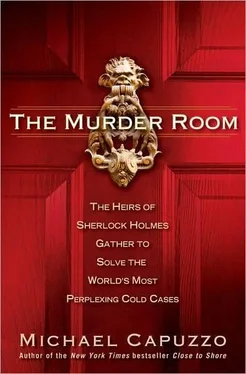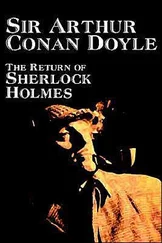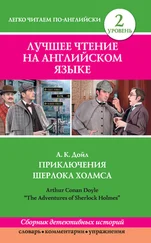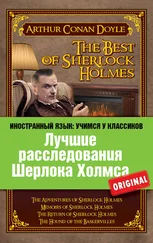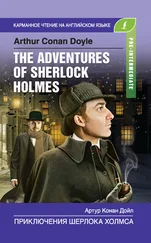Walter stared into the gray afternoon as if he’d rather have been watching iron oxidize than Bender’s libido on exhibit.
Before the food came, the three men fell into an easy camaraderie talking murder and mayhem, including the case that connected them. They’d all worked on the U.S. Marshals’ pursuit of the fugitive killers Hans Vorhauer and Robert Thomas Nauss. “It’s because of Bill sharing his investigation with the FBI that I got a breakthrough that helped lead to Vorhauer’s capture,” Bender said. “And Richard helped me with a profile of Nauss. I still think we’ll get him one of these days.”
Bender’s face reddened in sudden anger. “That’s how it should work. But when I went to Washington to see the FBI about the List case, they were practically hostile to me. They wouldn’t give me anything. I think they had a profile of List they wouldn’t share.”
Fleisher and Walter nodded in agreement. “I’ve seen victims victimized by the justice system for thirty years,” Fleisher said sadly. His brown eyes had a faraway look.
“But why is solving a murder so hard?” Bender went on. As an artist relatively new to forensics, he was frustrated by the rigid thinking of most policemen. “They never think out of the box!”
“Police are very procedural,” Walter said, frowning. “It’s the foundation of investigative procedure, to build a case on what’s there. But sometimes what’s not there is even more important.” He smiled wickedly. “For instance”-he chuckled-“if I were sitting here naked, what was missing would become very relevant, as old and ugly as I am!”
Walter well knew the virtues of sharing information. He told them of the infamous Case of the Underwear Killer. He had just finished speaking about murder personality subtypes at a forensic conference in Atlanta when Georgia police approached him for help on the baffling case. Three women’s slips had been found strewn across the bushes of a park. The slips were bloodied and appeared to have been slashed down the middle with a knife. The garments had the letter “J” sewn into them. But there was no body. No sign of a struggle. What did it all mean?
“The police looked at it and said, ‘What happened here?’ ” Walter said mockingly. “Well, what the fuck do you mean what happened here? Anyone with half a brain can see a murder happened here. But often one doesn’t have to have half a brain to be in law enforcement.” Cutting and slicing were evidence of picquerism, Walter told them, the pleasure of causing pain through puncturing or slashing. It was the grave sign of a sadistic serial killer on a learning curve, like Ted Bundy, who evolved into even worse behavior, such as murder for the pleasures of necrophilia or cannibalism.
Fleisher looked up from his cheeseburger. “Thanks for mentioning it.”
“Not at all. The point is that some weeks later I was at a forensic conference in St. Louis listening to Roy Hazelwood, the FBI agent, describe a murder. It was a mysterious case of women’s corpses in Ohio. The torsos had been slashed open, and the slips were missing.”
Walter arched his eyebrow. “As it happens, Roy and I have known each other since Christ wore tennis shoes. After the speech, I said, ‘ Roy, I have a question for you-what does a “J” sewn in slashed women’s underwear mean to you?’ His mouth fell open. It was the first initial of one of the victims, says he.” The two profilers pieced together the case of a serial murderer, a long-distance trucker who was convicted of killing his victims in Ohio and scattering their slips in Georgia.
Wendy came and took plates away, pouring coffee with a free hand. Walter grinned. “So there’s a certain inherent value in sharing information. We can put two and two together, make connections that others don’t see.”
Bender’s voice rose in excitement. “Exactly! Bill and I have always said we ought to form a group of forensic experts who share information and cut through all the red tape and bullshit. We could work around law enforcement, and really get things done.”
Fleisher chuckled. “They already have people doing that, Frank. Their names are Batman and Robin. We can’t skirt around law enforcement like vigilantes. We need their cooperation and information.”
He turned to Walter. “We’ve talked about getting together talking over cases like we’re doing now.”
Walter sniffed in disapproval. “I’m not much of a joiner.”
Fleisher burned to join the battle of good and evil where it counted, in the suffering of individuals crying for help. If their private club of detectives didn’t take on the mantle of crusaders, it could at least be a social club, old cops hashing over cases together in their golden years.
But their dream was missing something. The ASAC wielded tremendous power but sat dreaming with it like an aging king reluctant to rise and draw his sword. The humdrum routine of life enveloped him, sealed with an ineffable sadness he couldn’t identify.
The café emptied, Wendy came with pie and more coffee, the long shadows of skyscrapers striped the street. As night closed in on the café, the figures of homeless men passed like forgotten ghosts. The three talked about the serial killers who stalked Philadelphia, and the unprecedented levels of anxiety and fear they saw in the faces of ordinary Philadelphians. “I’m seeing criminals who are much more vicious, violent, and depraved than in the previous generation,” Walter said. “People who kill for the fun of it.” The enormity of their battle settled over them with the dusk, challenging their easy bravado.
A sharp, excited voice broke the quiet. “What are we going to call our club?” Bender asked. “The Sherlock Holmes Society?”
Fleisher grinned. His irrepressible friend was never down for long. “That’s the right idea, but too obvious. I have a better name in mind. Let’s call it the Vidocq Society.” To puzzled looks, he told them that Eugène François Vidocq of nineteenth-century Paris was the greatest detective who ever lived. “And he’s my hero.”
Fleisher had rediscovered Vidocq as a young man in the FBI Academy while studying the history of criminology. The French-man was legitimately the father of modern criminology. In 1811, Vidocq founded a plainclothes detective unit, composed mostly of ex-cons like himself, which Napoleon Bonaparte signed into law as a state investigative agency, Brigade de la Sûreté, the forerunner of the FBI and Scotland Yard. Vidocq invented criminal record-keeping, ballistics, plaster foot casts, and invisible inks, experimented with fingerprinting, and was a master of disguise. Accused of staging crimes to solve them, he was ousted from Sûreté, and in 1833 founded the first private detective agency, Le Bureau des Renseignements (Office of Information), seventeen years before Allan Pinkerton formed the Pinkerton National Detective Agency in Chicago.
But it was Vidocq’s remarkable story of redemption and his belief in the redemption of others that touched Fleisher most deeply. The chief cop of Paris was a great friend of the poor and said he would never arrest a man for stealing bread to feed his family. Vidocq was Hugo’s model for Javert, the relentless detective in Les Misérables, as well as for Valjean, the ex-con who reforms and seeks redemption for his deeds.
Fleisher would write to law enforcement specialists around the world to recruit members to the Vidocq Society.
Bender’s face pinked with excitement. “We really bonded,” he told Fleisher on the way out. “We have a name, we’re going to get this done!”
Walter did not share his comrades’ excitement. As the fevered talk of forming societies and clubs and rooting out evil swirled around him, he grew quiet, and left the table early.
Читать дальше
